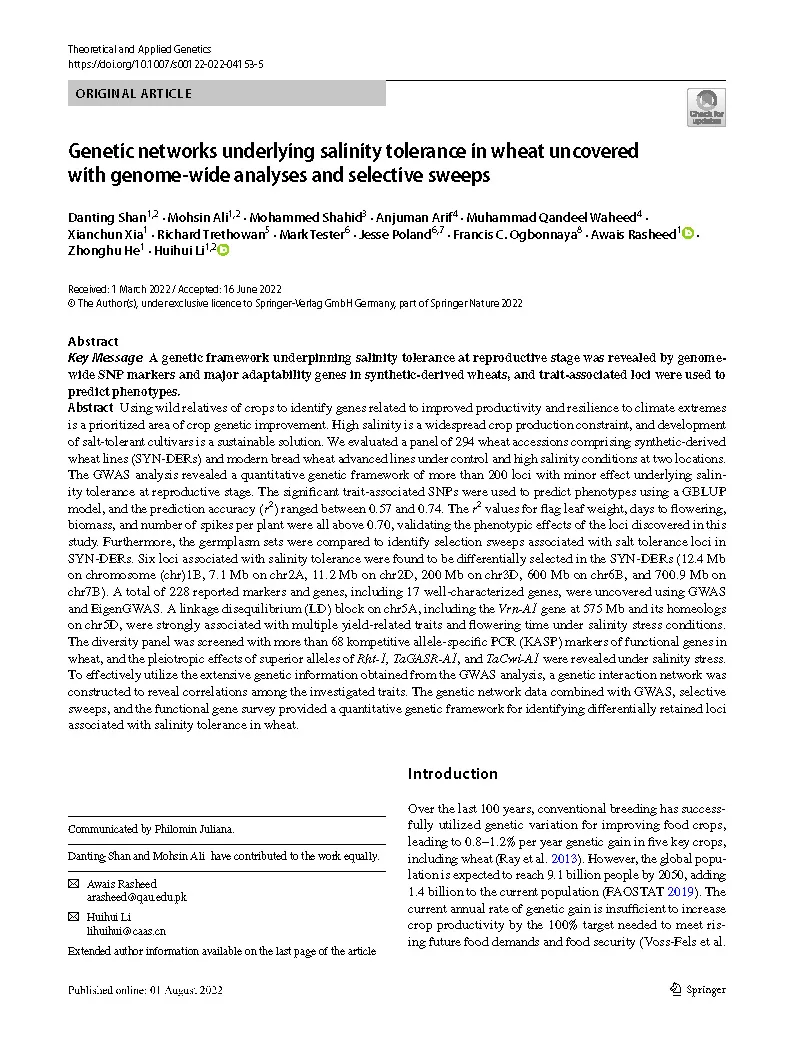Genetic networks underlying salinity tolerance in wheat uncovered with genome-wide analyses and selective sweeps
Using wild relatives of crops to identify genes related to improved productivity and resilience to climate extremes is a prioritized area of crop genetic improvement. High salinity is a widespread crop production constraint, and development of salt-tolerant cultivars is a sustainable solution. We evaluated a panel of 294 wheat accessions comprising synthetic-derived wheat lines (SYN-DERs) and modern bread wheat advanced lines under control and high salinity conditions at two locations. The GWAS analysis revealed a quantitative genetic framework of more than 200 loci with minor effect underlying salinity tolerance at reproductive stage. The significant trait-associated SNPs were used to predict phenotypes using a GBLUP model, and the prediction accuracy (r2) ranged between 0.57 and 0.74. The r2 values for flag leaf weight, days to flowering, biomass, and number of spikes per plant were all above 0.70, validating the phenotypic effects of the loci discovered in this study. Furthermore, the germplasm sets were compared to identify selection sweeps associated with salt tolerance loci in SYN-DERs. Six loci associated with salinity tolerance were found to be differentially selected in the SYN-DERs (12.4 Mb on chromosome (chr)1B, 7.1 Mb on chr2A, 11.2 Mb on chr2D, 200 Mb on chr3D, 600 Mb on chr6B, and 700.9 Mb on chr7B). A total of 228 reported markers and genes, including 17 well-characterized genes, were uncovered using GWAS and EigenGWAS. A linkage disequilibrium (LD) block on chr5A, including the Vrn-A1 gene at 575 Mb and its homeologs on chr5D, were strongly associated with multiple yield-related traits and flowering time under salinity stress conditions. The diversity panel was screened with more than 68 kompetitive allele-specific PCR (KASP) markers of functional genes in wheat, and the pleiotropic effects of superior alleles of Rht-1, TaGASR-A1, and TaCwi-A1 were revealed under salinity stress. To effectively utilize the extensive genetic information obtained from the GWAS analysis, a genetic interaction network was constructed to reveal correlations among the investigated traits. The genetic network data combined with GWAS, selective sweeps, and the functional gene survey provided a quantitative genetic framework for identifying differentially retained loci associated with salinity tolerance in wheat.
Year
2022
Publication Source
Theoretical and Applied Genetics
Publication type
Scientific Paper











